Tea plants can be categorized on the type of plant, the appearance of the dry leaves, or the color of the tea’s liquor. But what’s used is a more scientific way of categorizing all teas, which is based on the processing that the tea leaves have been put through. These methods were first developed in China and continue to be practiced today across most tea producing regions of the world.
Classification of teas
From one tea plant, it is possible to derive six types of tea: green tea, yellow tea, white tea, oolong tea, black tea and post-fermented tea. Each tea type can be further broken down by their styles–which can result from modifications in the processing method– type of tea plant, the cultivar, or even the intention of the tea maker.
Tea processing techniques
Between two and seven procedures are involved in the processing of fresh tea leaves; the addition or exclusion of any of these stages results in a different type of tea. Each of these procedures is carried out in a climate-controlled facility to avoid spoilage due to excess moisture and fluctuating temperatures.
Withering
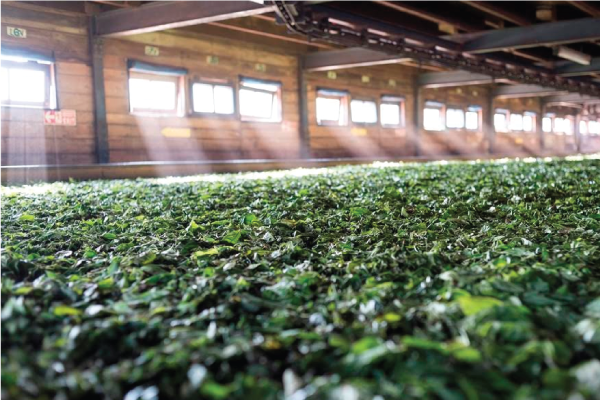
Withering refers to the wilting of fresh green tea leaves. The purpose of withering is to reduce the moisture content in the leaves and to allow the flavor compounds to develop. While it can be done outdoors, controlled withering usually takes places indoors. Freshly plucked leaves are laid out in a series of troughs and subjected to hot air forced from underneath the troughs. During the course of withering, the moisture content in the leaf goes down by about 30%, making the leaf look limp and soft enough for rolling. Additionally, the volatile compounds in the leaf, including the level of caffeine and the flavors, begin to intensify. A short wither allows the leaves to retain a greenish appearance and grassy flavors while a longer wither darkens the leaf and intensifies the aromatic compounds.
Fixing
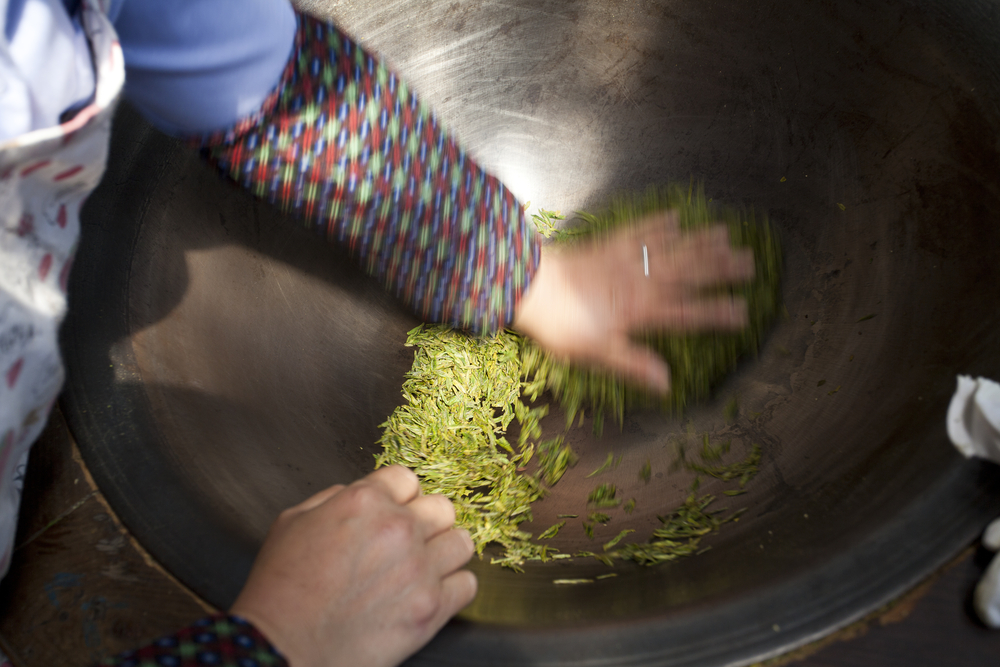
Fixing or “kill-green” refers to the process by which enzymatic browning of the wilted leaves is controlled through the application of heat. It is held that the longer it takes to fix the leaves, the more aromatic will be the tea. Fixing is carried out via steaming, pan firing, baking or with the use of heated tumblers. Application of steam heats the leaves more quickly that pan firing, as a result of which steamed teas taste ‘green’ and vegetal while the pan-fired ones taste toasty. This procedure is carried out for green teas and yellow teas.
Oxidation
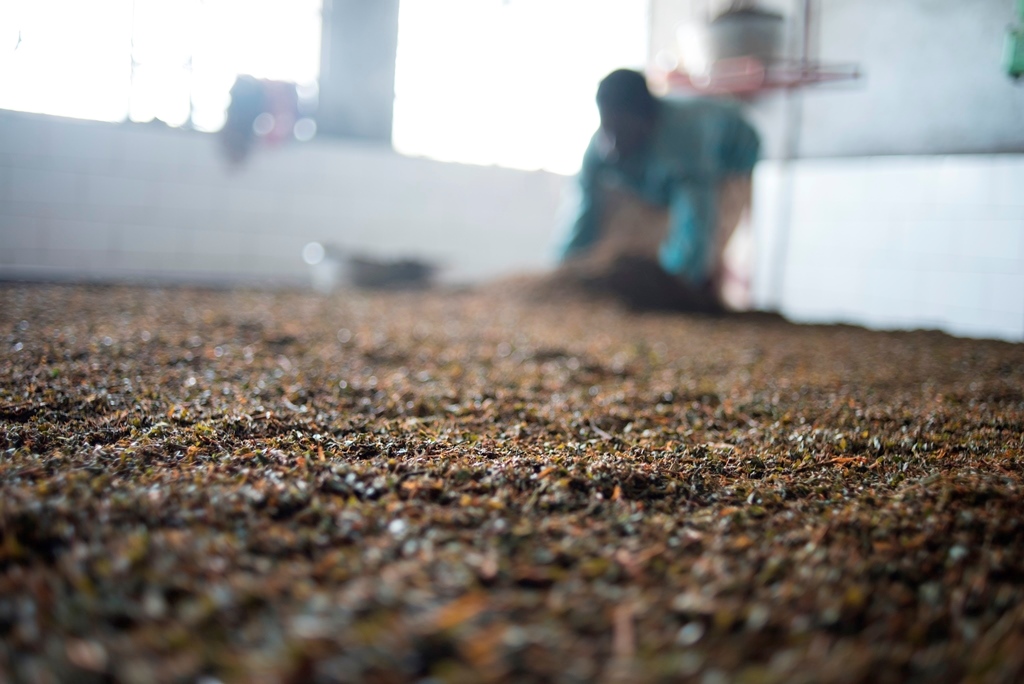
Oxidation results in the browning of the leaves and intensification of their flavor compounds. From the moment they are plucked, the cells within the tea leaves are exposed to oxygen and the volatile compounds within them begin to undergo chemical reactions. It is at this stage that polyphenolic oxidase, including theaflavin and thearubigin, begin to develop within the leaves. Theaflavins lend briskness and brightness to the tea while thearubigins offer depth and fullness to the liquor that’s produced.
In order to bring out specific intensities in flavors, tea makers control the amount of oxidation the leaves undergo. Controlled-oxidation is typically carried out in a large room where the temperature is maintained at 25-30º C and humidity stands steady at 60-70%. Here, withered and rolled leaves are spread out on long shelves and left to ferment for a fixed period of time, depending on the type of tea being made. To halt or slow down oxidation, fermented leaves are moved to a panning trough where they are heated and then dried.
Due to oxidation, the leaves undergo a complete transformation and exhibit an aroma and taste profile that’s completely different from the profile of the leaves that do not undergo this process. Less oxidized teas tend to retain most of their green color and vegetal characteristics due to a lower production of polyphenols. A semi-oxidized leaf has a brown appearance and produces yellow-amber liquor. In a fully oxidized tea, amino acids and lipids break down completely, turning the leaves blackish-brown. The flavors in such a tea are more brisk and imposing.
Rolling
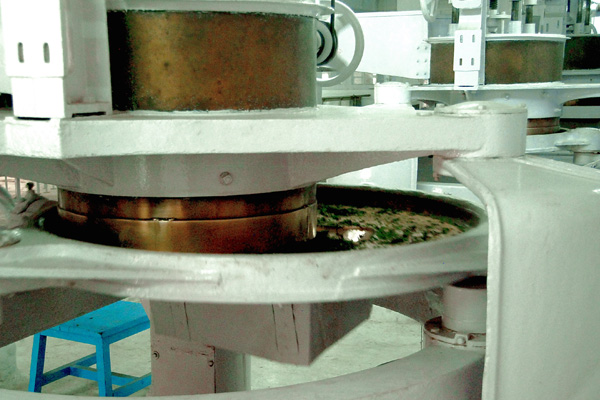
Rolling involves shaping the processed leaves into a tight form. As a part of this procedure, wilted/fixed leaves are gently rolled, and depending on the style, they are shaped to look wiry, kneaded, or as tightly rolled pellets. During the rolling action, essential oils and sap tend to ooze out of the leaves, intensifying the taste further. The more tightly rolled the leaves, the longer they will retain their freshness.
Drying
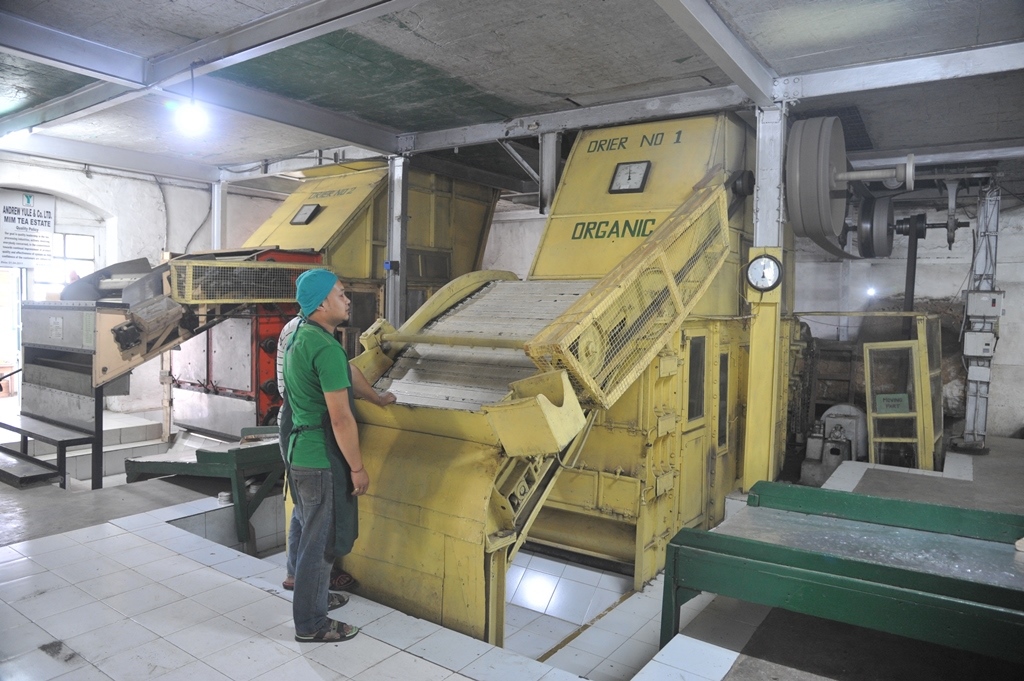
In order to keep the tea moisture-free, they are dried at various stages of production. Drying enhances a tea’s flavors and ensures its long shelf-life. Also, drying brings down the tea’s moisture content to less than 1%. To dry the leaves they are fired or roasted at a low temperature for a controlled period of time, typically inside an industrial scale oven. If the leaves are dried too quickly, the tea can turn abrasive and taste harsh.
Aging
Some teas are subjected to aging and fermentation to make them more palatable. Some types of Chinese Pu-erh, for example, are aged and fermented for years, much like wine.
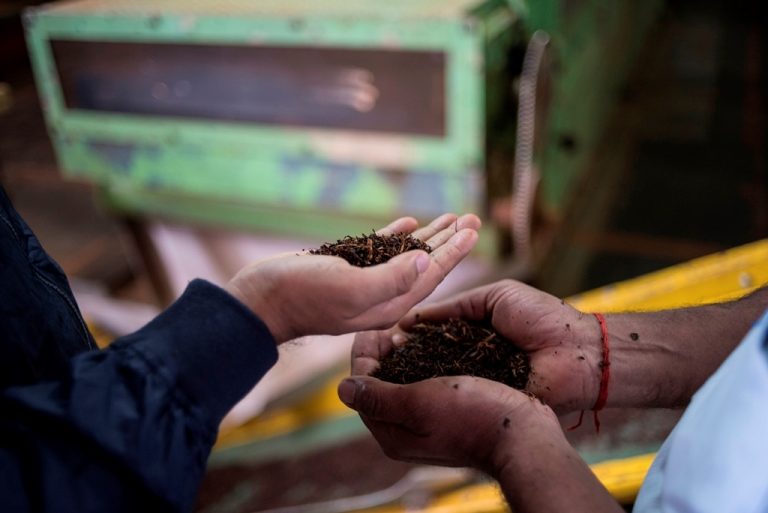
Comments are closed.